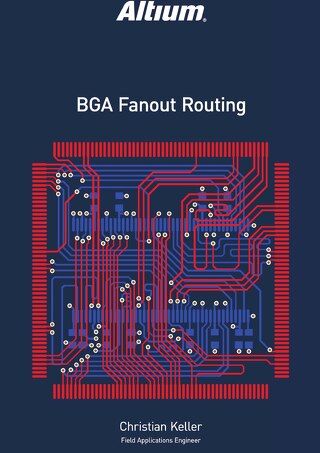Confidently Capture All Design Details in PCB Design Documentation

The design document must capture all aspects of the design of a system. This includes the specification, design intent, design process and traceability back to the specification. Only then can the designer be confident that all relevant design information has been captured in one place. This paper is meant to be a guideline to prompt you to consider how to capture design details beyond the fabrication and assembly drawings.
INTRODUCTION
One of the most important yet often avoided aspects of documenting a design is the formal design document. Too often we finish the design, generate fabrication, assembly and validation documents then consider the job done. Properly capturing the system specification, design intent, design process and traceability back to the specification is a time-consuming and arduous yet very necessary task.
The capture design details in pcb editor documentation must begin in the planning stages of any design and starts with the specification. If the design targeted by the design document is a subsystem of a larger system, the overall system specification must be presented and then those portions of the system specification which flow down into the subsystem must be addressed. Throughout the design process, the design document becomes a living document, growing with the design process as each sub-circuit is designed and implemented.
The intent of the design document is to capture the relevant design information beyond the scope of the schematic, fabrication and assembly drawings.
THE SPECIFICATION
The specification stage is another area often missed or avoided due to time and budgetary constraints. Therefore, time and resources must be allocated up front to address the proper development of the specification. When working in the startup environment where time and dollars are at a premium, I have on several occasions been confronted with being tasked to design products with vague or nonexistent specifications. This approach is frot with peril. Designing to a nonexistent or moving specification results in the never ending development story. The specification is there to tell you what you are to accomplish and verify when the design is complete. Too often a mentality of “we can make it better” persists and the project ends up over budget and behind schedule, key reasons for not dealing with the specification up front in the first place.
Often the specification of the device being addressed in the design document will be a subsystem of a much larger system. The overall system specification is presented, and then portions of the system specification which apply to the device at hand are presented in a logical and orderly manner.
The specification should include (but not be limited to):
- Function (what is the subsystem intended to do)
- Operational environment (temperature, humidity, etc.)
- Interfaces to other subsystems
- Power budget
- Available supply voltages
- Mechanical constraints size/weight/shape
- Shock and vibration requirements
- Thermal (available cooling, radiated thermal emission constraints, etc.)
- EMI radiated, conducted and susceptibility
- Reliability.
Moreover, the list goes on…
System Overview
The system overview describes the system in a narrative using as few technical terms as possible. This is a high-level system architecture description and should include an architectural diagram showing the various subsystems and their interconnecting interfaces. Interfaces to other external subsystems should also be addressed in both the narrative and diagram.
Design Considerations
Design considerations describe any constraints in the system design. This section should reference any trade studies conducted as well as any assumptions made by the design team in developing the system design. This section should refer to the specification for tractability.
Sub-circuit Design
The sub-circuit design section breaks out each sub-circuit such oscillators, amplifiers, MCU and other granular system functional blocks. Each sub-circuit should have its section containing (but not limited to):
Title
The title should be descriptive of the circuit operation.
Theory of Operation
The theory of operation should describe the circuit functionality in low-level technical detail. If applicable, a reference to the specification item being fulfilled by the sub-circuit should be referenced for traceability.
Circuit Diagram
The circuit diagram, Figure 1, may be copied directly from the schematic capture tool if that functionality is supported. Otherwise, a graphical editing tool must be employed.

Figure 1: The circuit diagram can be copied from the schematic capture tool.
Design Calculations
Any calculations for component values must be presented such as power dissipation of all components where applicable, filter time constants and any other calculated circuit performance parameters.
Simulation Results
If any simulations are performed on the sub-circuit, the results must be presented. A detailed technical characterization of the simulation results must also be provided. If applicable, a reference to the specification item being fulfilled by the sub-circuit should be referenced for traceability.

Figure 2: Simulation results must be included.
Interface Architecture
The interface architecture of the subsystem being detailed in the design document must be described in low-level technical detail. Any negotiated hardware configurations between subsystems must be discussed in detail and referenced back to the specification.
Mechanical Features
The mechanical features section contains the physical properties of the design. Information conveyed in this section should include but is not limited to Board shape, dimensions, weight, the center of mass (if applicable), and key features. Where appropriate, a reference to the specification item being fulfilled should be cited. This section should contain a diagram of the finished system, shown in the example in Figure 3, noting key features such as dimensions, indicators, cable connection, large components and any other significant features of the design.

Figure 3: The mechanical dimensions and key features are detailed in mechanical drawings.
System Analysis
When the specification requires, a final analysis of the system must be conducted. The final design is modeled and analyzed to verify that the final design meets the specification. The type of data to be presented in this final section traces back to system requirements for thermal, shock and vibration, reliability, EMI and form fit and function. A 3D model is also often required to complete the final design documentation.
CONCLUSION
The design document is a living document and a very necessary part of every design. It provides traceability back to the specification and is integral in determining when the design phase is complete. The design documentation is not a replacement for the traditional hardware fabrication and assembly documents but should be seen as capturing the entire design process.










